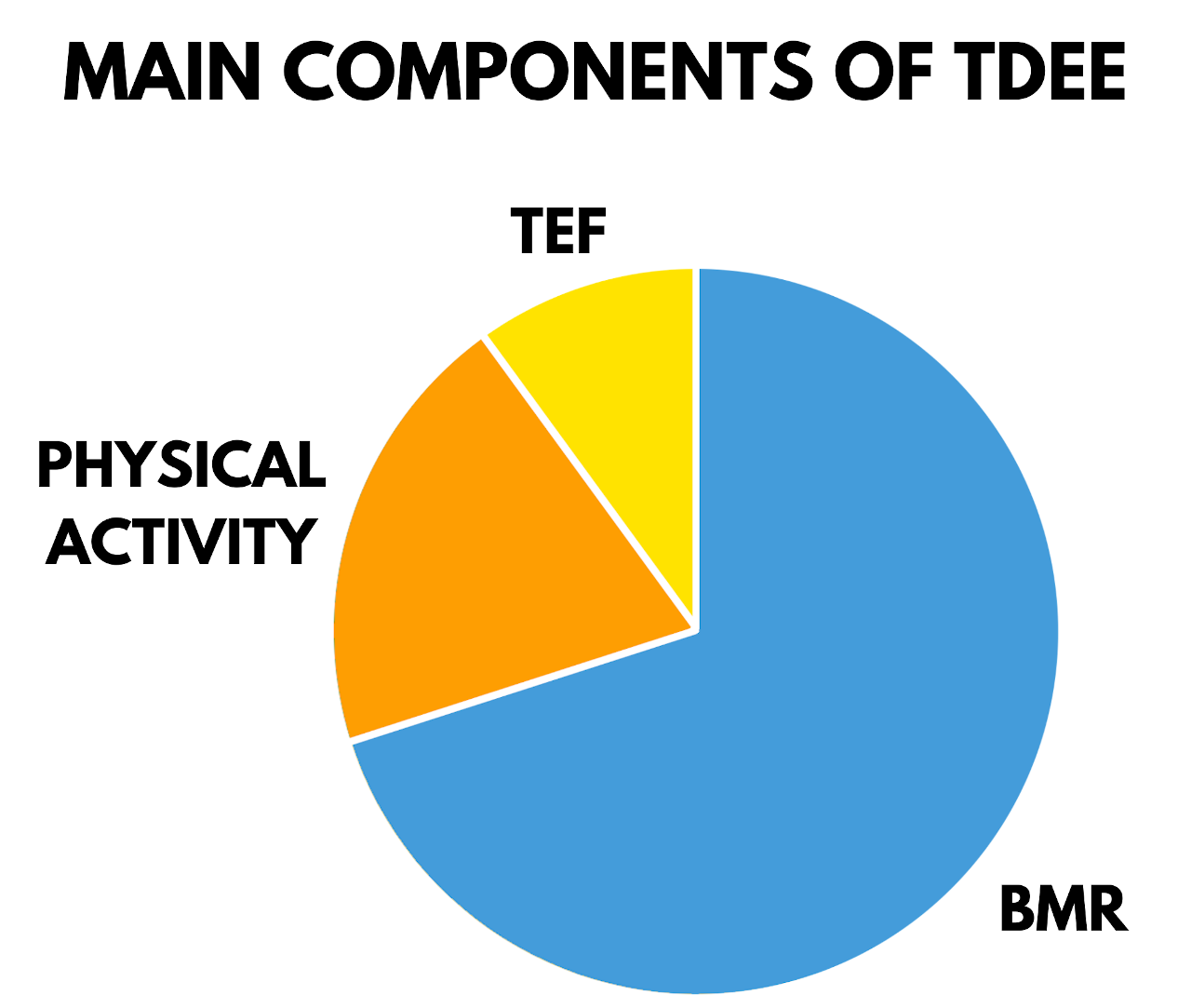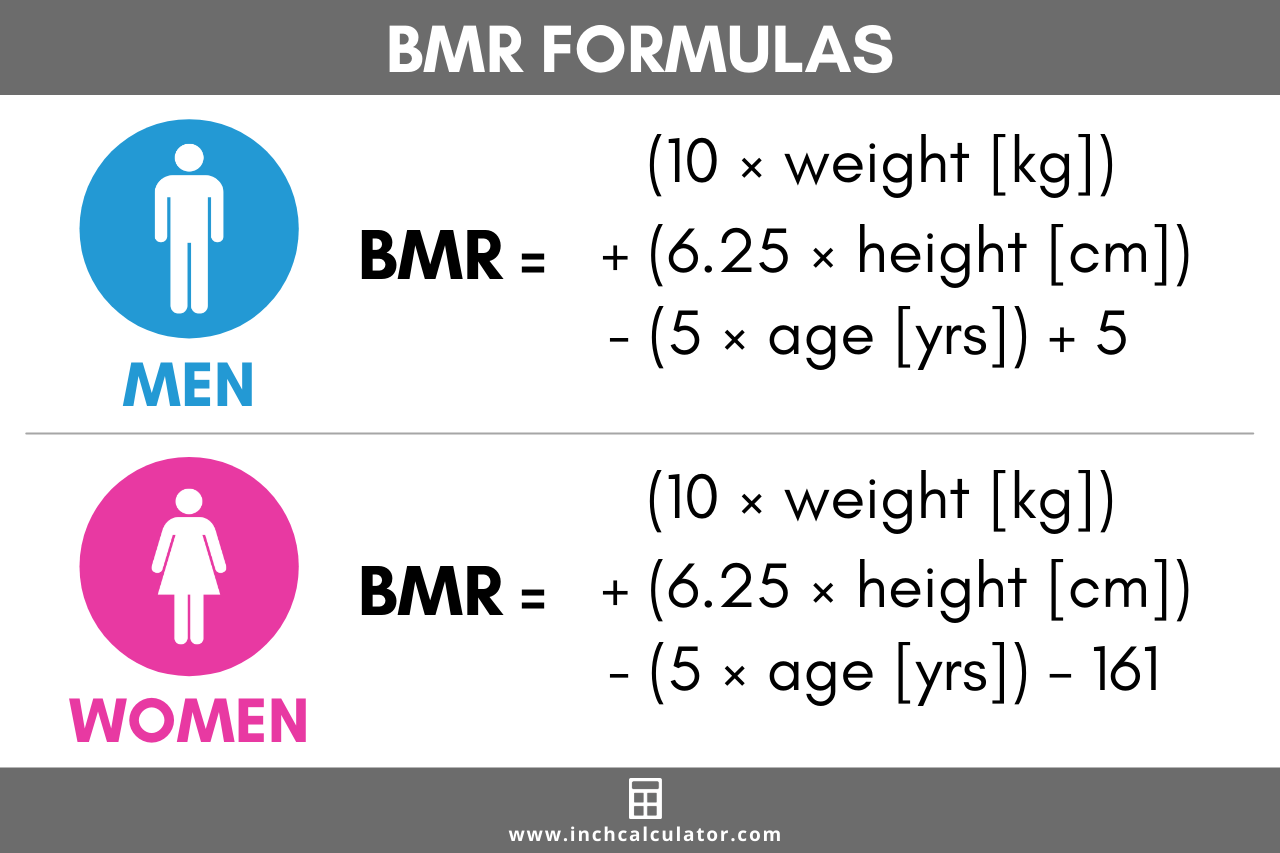Maintenance Calorie Calculator
Use the calorie maintenance calculator below to calculate how many calories you need per day to maintain your current weight.
Daily Calories to Maintain Weight:
On this page:
How to Calculate Calories to Maintain Weight
The food you consume each day gets converted to energy to fuel your bodily functions and daily exercise and activity.
The amount of calories you need depends on your basal metabolic rate along with your activity level.
For instance, if you are very active throughout the day, your body needs more calories for fuel than someone who leads a less active lifestyle.
To calculate how many calories your body needs to maintain weight, you need to calculate how much energy you burn each day, which is called your total daily energy expenditure (TDEE). You can adjust your calorie requirements to gain weight when bulking or to lose weight when dieting.
TDEE consists of three main components:
- Basal Metabolic Rate (BMR): Basal metabolic rate is the number of calories your body needs for basic functions at complete rest. It includes normal bodily functions like breathing, heart rate, blood circulation, and brain activity.
- Thermic Effect of Food (TEF): The thermic effect of food is the number of calories you use to digest and metabolize your food. It’s typically no more than 10% of your BMR.[1] However, it is also influenced by the amount and quality of food that you eat since higher amounts of food consumption require more energy to digest.
- Thermic Effect of Physical Activity (TEPA): The thermic effect of physical activity is the number of calories burned doing activities such as working out or moving around.

You can calculate your TDEE, and thus the amount of calories you need each day to maintain your current weight, in a few simple steps.
Step One: Calculate Your BMR
Your BMR is dependent on your individual physiology and can actually be measured in a lab setting using specialized equipment using a method called indirect calorimetry.[2]
This method measures the heat coming off your body to calculate the amount of energy you’re expending in the form of calories burned.
This is obviously not the most convenient way to measure BMR, so several formulas have been developed to estimate BMR using easier-to-measure things about you, such as age, gender, height, and weight.

The most widely used formulas for BMR are the Mifflin-St Jeor formula[3] and the Harris-Benedict equations.[4]
Mifflin-St Jeor BMR Formula
For Men:
BMR = (10 × weight [kg]) + (6.25 × height [cm]) – (5 × age [years]) + 5
For Women:
BMR = (10 × weight [kg]) + (6.25 × height [cm]) – (5 × age [years]) – 161
The Katch-McArdle equation is another commonly used formula that also takes into account your lean body mass. The Katch-McArdle equation tends to be a good formula for athletes, since it accounts for your lean body mass.
Step Two: Calculate Your TDEE
You also need to account for your daily activity, which is a significant portion of your daily calorie needs. You can do this by multiplying your BMR by an activity factor.
TDEE = BMR × activity factor
Your activity factor varies depending on how active you are throughout the day, on average. The following chart shows the activity favor for various levels of activity.[5]
| Level of Activity | Example | Activity Factor |
|---|---|---|
| Sedentary | Little to no exercise, such as a desk job with no additional physical activity | 1.2 |
| Lightly Active | Light exercise 1-2 days/week | 1.375 |
| Moderately Active | Moderate exercise 3-5 days/week | 1.55 |
| Very Active | Hard exercise 6-7 days/week | 1.725 |
| Extremely Active | Hard daily exercise and physical job or two times a day training | 1.9 |
The result of multiplying your BMR by the activity factor is your TDEE, which will give you a good estimate of how many calories you need every day to maintain your current weight.
Step Three: Account for the Thermic Effect of Food
The thermic effect of food is difficult to estimate accurately, but is typically 10% or less of total calories. This is often left out when estimating calorie needs, but you can approximate it by multiplying your BMR by 10% before multiplying by the activity factor.
TDEE Formula Accounting for TEF
TDEE = (BMR × 1.1) × activity factor
Caloric Intake: Nutrition Quality vs. Food Quantity
When calculating ideal calorie intake, the type of food you consume is just as important as how many calories it has. The food you eat is composed of three main macronutrients: protein, fat, and carbohydrates.
You can break down your calorie intake based on how many grams of protein, fat, and carbohydrates you consume, which is referred to as counting macros.
Just like calculating your calorie intake, calculating your macro percentages is dependent on your health and fitness goals. For example, a bodybuilder will require a higher protein intake than someone who is just looking to maintain general fitness.
Specialized diets, such as keto, can also impact your preferred macro percentages.
| Goal | Protein | Carbohydrate | Fat |
|---|---|---|---|
| General Fitness | 10-15% | 45-55% | 25-35% |
| Medium to High Intensity Fitness (1-2 hours/day, 4-6 days/week) |
20-30% | 55-65% | 30% |
| Weight Loss | 25-30% | 45-50% | 20-25% |
| Special Diets: Ketogenic Diet | 15-20% | 5-10% | 70-80% |
To get personalized recommendations for the best macro percentages based on your specific goals, it is best to discuss with a dietitian or physician to determine the best macro percentages for you to follow.
References
- Rising, R., Harper, I. T., Fontvielle, A. M., Ferraro, R. T., Spraul, M., & Ravussin, E., Determinants of total daily energy expenditure: variability in physical activity, The American journal of clinical nutrition, 1994, 59(4), 800-804. https://pubmed.ncbi.nlm.nih.gov/8147322/
- Delsoglio, M., Achamrah, N., Berger, M. M., & Pichard, C., Indirect Calorimetry in Clinical Practice, Journal of clinical medicine, 2019, 8(9), 1387. https://doi.org/10.3390/jcm8091387
- Mifflin, M. D., St Jeor, S. T., Hill, L. A., Scott, B. J., Daugherty, S. A., & Koh, Y. O., A new predictive equation for resting energy expenditure in healthy individuals, The American journal of clinical nutrition, 1990, 51(2), 241-247. https://pubmed.ncbi.nlm.nih.gov/2305711/
- Roza, A. M., & Shizgal, H. M., The Harris Benedict equation reevaluated: resting energy requirements and the body cell mass, The American journal of clinical nutrition, 1984, 40(1), 168–182. https://doi.org/10.1093/ajcn/40.1.168
- Kelly, M., Resting Metabolic Rate: Best Ways to Measure It—And Raise It, Too, American Council on Exercise, https://www.acefitness.org/certifiednewsarticle/2882/resting-metabolic-rate-best-ways-to-measure-it-and-raise-it-too/
- Bachus, T., How to Determine the Best Macronutrient Ratio for Your Goals, American Council on Exercise, 2016, April 15, https://www.acefitness.org/resources/pros/expert-articles/5904/how-to-determine-the-best-macronutrient-ratio-for-your-goals/
- Zhu, H., Bi, D., Zhang, Y., Kong, C., Du, J., Wu, X., Wei, Q., & Qin, H., Ketogenic diet for human diseases: the underlying mechanisms and potential for clinical implementations, Signal Transduction and Targeted Therapy, 2022, 7(1), https://doi.org/10.1038/s41392-021-00831-w



